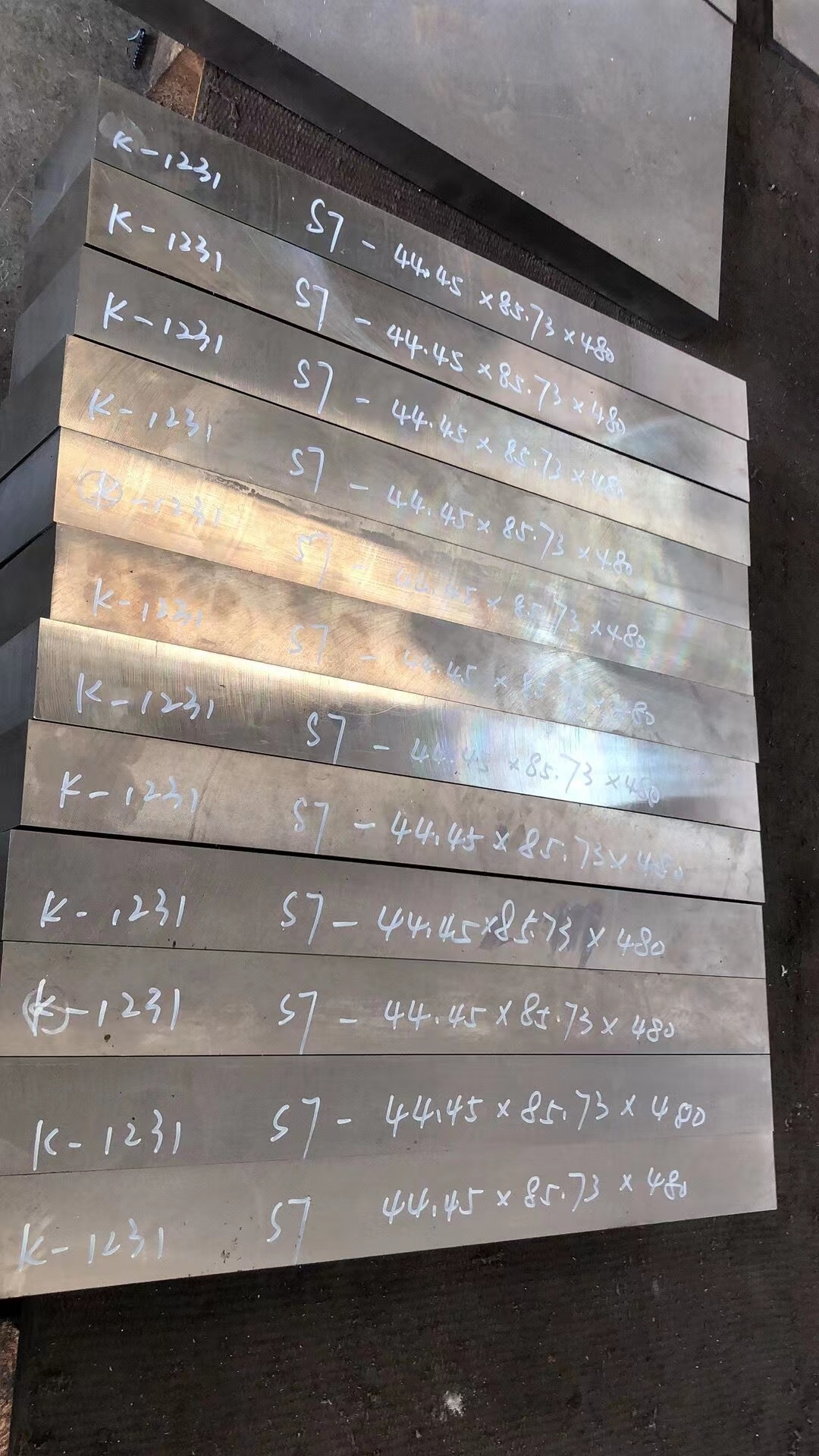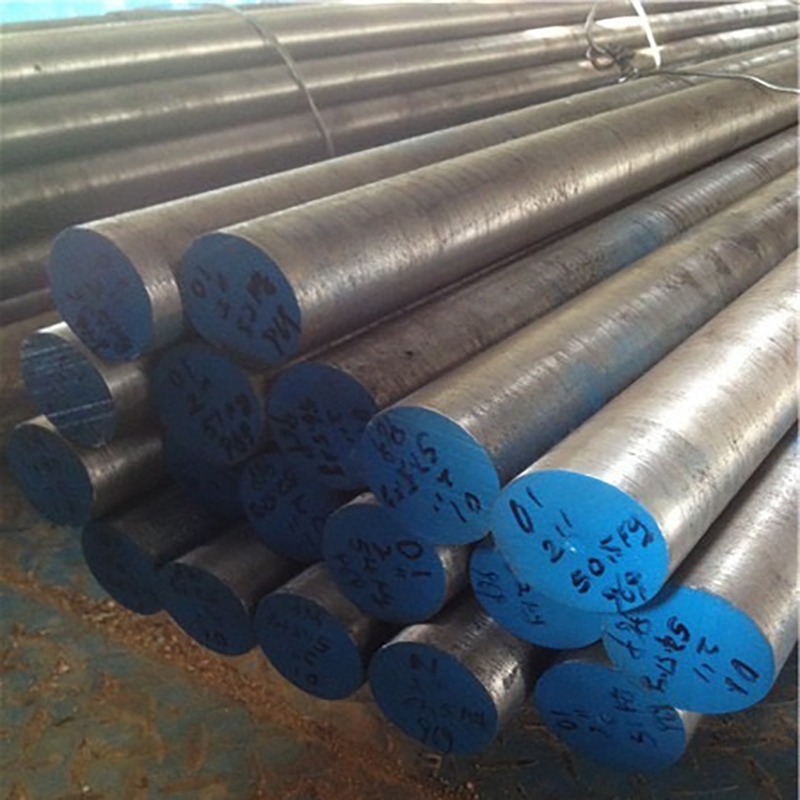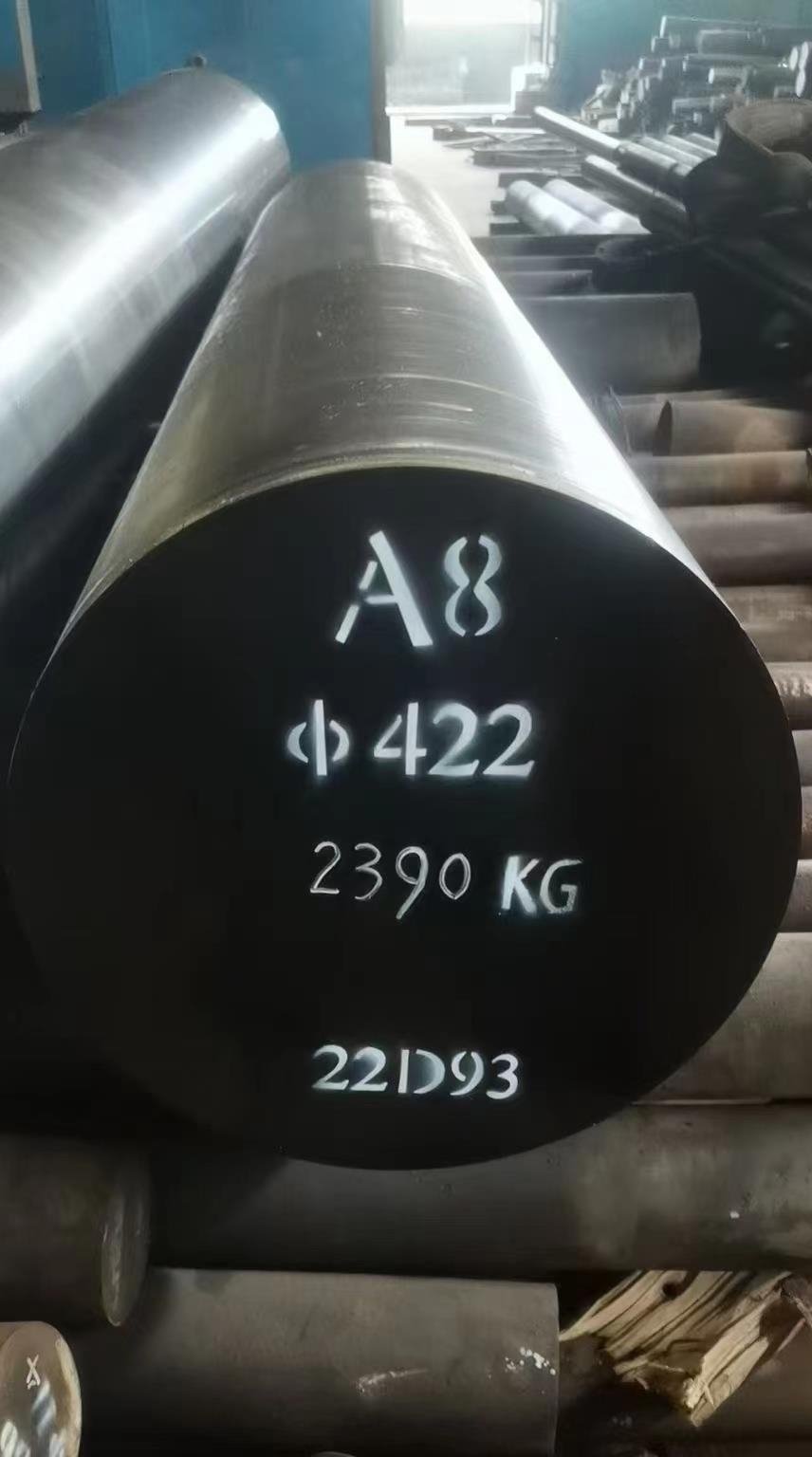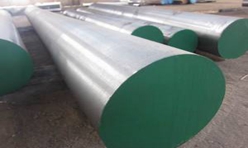1.2355 ASTM A681 S7 Tool Steel Flat Bar
S7 steel ASTM A681 S7 Tool Steel Flat Bar
1 S7 steel Introduction
S7 tool steel is a shock resisting tool steel with excellent toughness and high strength, along with medium wear resistance. It has maximum shock resistance and high compression strength, which gives it good deformation resistance in use, while retaining good toughness. S7 tool steel is easy to machine in the annealed condition and can be readily heat treated. It can be quenched in air, exhibiting minimal distortion on hardening. S7 tool steel also has medium hot work characteristics, making it a versatile tool steel for both cold and warm shock applications, as well as plastic molds that require high hardness.
Back to Top
2 s7 steel Applications
S7 tool steel has an unusual combination of properties, making it suitable for an extremely wide range of tool and die work – where shock-resistance, medium hot-work properties, or ease of machining and heat-treatment are most important.
It is recommended for both hot and cold shock applications such as rivet sets, chisels, punches, moil points, hot headers and gripper dies. S7 tool steel is also suited for short-run dies used in coldforming, blanking, and bending. Other uses include: engraving dies, machined cavities for plasticmolding dies, die-casting dies, shear blades, and master hobs.
Back to Top
3 General Properties
- High toughness
- Good wear resistance
- High impact resistance
- Good through hardening properties
- Good machinability
- Excellent polishability
- Good dimensional stability during hardening
Back to Top
4 All Grades Comparison:
Back to Top
5 Quality Standard
ASTM A681 – 08 Standard Specification for Tool Steels Alloy.
Back to Top
6 s7 steel Chemical Composition(%)
| C | Si | Mn | P | S | Cr | Mo | V |
|---|---|---|---|---|---|---|---|
| 0.45-0.55 | 0.20-1.00 | 0.20-0.90 | 0.030 max | 0.030 max | 3.00-3.50 | 1.30-1.80 | 0.35 max |
Smelting Option
1 EAF: Electric Arc Furnace
2 EAF+LF+VD: Refined-smelting and vacuum degassing
3 EAF+ESR: Electro Slag Remelting
4 EAF+PESR: protective atmosphere Electro Slag Remelting
5 VIM+PESR: Vacuum induction melting
Forming Option
1 Hot rolling process
2 Hot Forging: Electro-hydraulic; High-speed-hydraulic; Oil-hydraulic; Precision-forging
Heat-treatment Option
1 +A: Annealed (full/soft/spheroidizing)
2 +N: Normalized
3 +NT: Normalized and tempered
4 +QT: Quenched and tempered (water/oil)
Suface Option
1 Black Surface
2 Grounded: Bright but rough ; Not precision
3 Machining for plate: Bright and precision; Little turning scar
4 Peeled/Turned: Bright and precision; Little turning scar
5 Polished: Very Bright and precision size; Not turning scar
Other Services
1 Cutting: Small pieces
2 CNC Machine: Produce as your drawing
3 Package: Bare/Nylon/Canvas/Wooden
4 Payment:T/T, L/C, O/A(request credit)
5 Transport:FOB/CFR/CIF/DDU/DDP (train/ship/Air)
Back to Top
7 Surface Treatments
Because of the low tempering temperatures normally used, S7 tool steel is not typically suitable for nitriding or similar treatments.
Back to Top
8 Workability
Forging: Heat uniformly and forge from a temperature in the range of 1950/2050°F (1066/1121°C). Do not continue forging below 1700°F (927°C) but reheat as often as necessary. Small, simple forgings can be cooled slowly in dry lime, ashes or other insulating material. The best practice for large forgings is to place them in a furnace heated to about 1400°F (760°C), soak uniformly at this heat, then shut off the heat and let the forgings cool in the furnace. This is not an anneal, and after the forging is cold, it must be properly annealed.
Machinability: The machinability of Carpenter S7 alloy may be rated at about 75/80% of a 1% carbon tool steel, or about 50/55% of B1112. Approximate turning speeds 85/90 surface feet per minute (0.48/0.56 m/s) are suggested when using high-speed cutting tools.
Back to Top
9 HEAT TREATMENT
ANNEALING:
- Heat to 1550F (840C), hold 2 hours, slow cool 50F (30C)/hour maximum) to 1000F (540C), air cool.
OR
- Heat to 1550F (840C), hold 2 hours, cool to 1400F (760C), hold 4 hours, air cool to room temperature. Typical annealed hardness: 187/220 BHN.
STRESS RELIEVING:
- Annealed Material: Heat to 1200/1250F(650/675C), hold two hours, cool in still air.
- Hardened Material: Heat to 25F(15C) below original tempering temperature, hold two hours, cool in still air.
HARDENING:
- Preheat: Heat to 1250° F, hold at this temperature until thoroughly soaked.
- Harden: Heat to 1725 to 1750° F, soak at heat for 45 to 60 minutes per inch of thickness. Sizes under 1″ thick should be held for 45 to 60 minutes minimum.
- Quench: Air quench sections up to 2-1/2″ thick in still air. Quench to 150° F. Temper immediately after quenching in all cases.
- Temper: Double temper is mandatory. Soak for two hours per inch of thickness for each temper. Air cool to room temperature between tempers. For cold work applications, the normal tempering range is 400 to 500° F. For hot work applications, a tempering temperature of 900 to 1000° F is suggested. Never temper S7 tool steel under 400° F.
QUENCHING MEDIA
- Vacuum furnace with sufficient overpressure
- Forced air or gas
- Martempering bath at 360–480°F (180–250°C), then cool in air or Oil (large cross sections)
Note 1: Quenching in oil gives an increased risk for dimensional changes and cracks.
Note 2: Temper the tool as soon as its temperature reaches 120–160°F (50–70°C).
TEMPERING:
S7 tool steel is normally tempered one and one-half hours to two hours for each inch of greatest crosssection. The tempering temperature varies according to the intended use. For cold-working and similar applications, a tempering temperature of 400°F is recommended. For hot-work applications, a tempering temperature of 900 to 1000°F is suggested. Never temper at less than 400°F.
Back to Top
10 Welding:
Use hot work tool steel filler material 4140 or 4150 type filler material may be satisfactory for small repairs or welds away from working surface of tool.
Annealed Material:Preheat to 400/600F(205/315C). Maintain above 400F(205C) during welding. Reanneal or temper 1400F(760C) for 4 hours after welding.
Hardened Material: Preheat to original tempering temperature (300F(150C) minimum). Maintain above 300F(150C) during welding. Cool to 150F(65C) after welding. Temper 25F(15C) below original tempering temperature. (300F(150C) Minimum)
Back to Top
11 s7 steel Mill′s test certificate
EN 10204/3.1 with all relevant data reg. chem. composition, mech. properties and results of testing.
Back to Top




